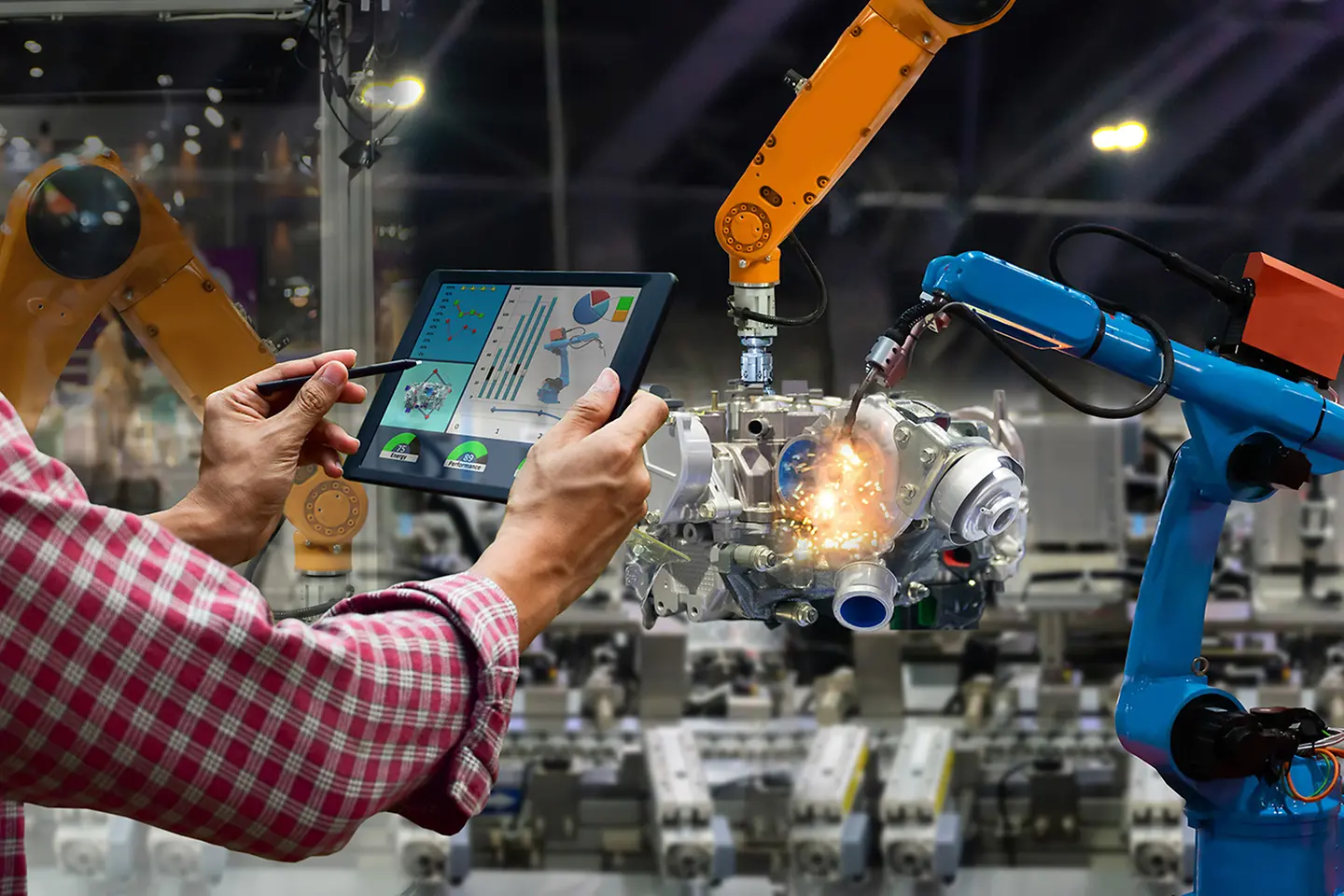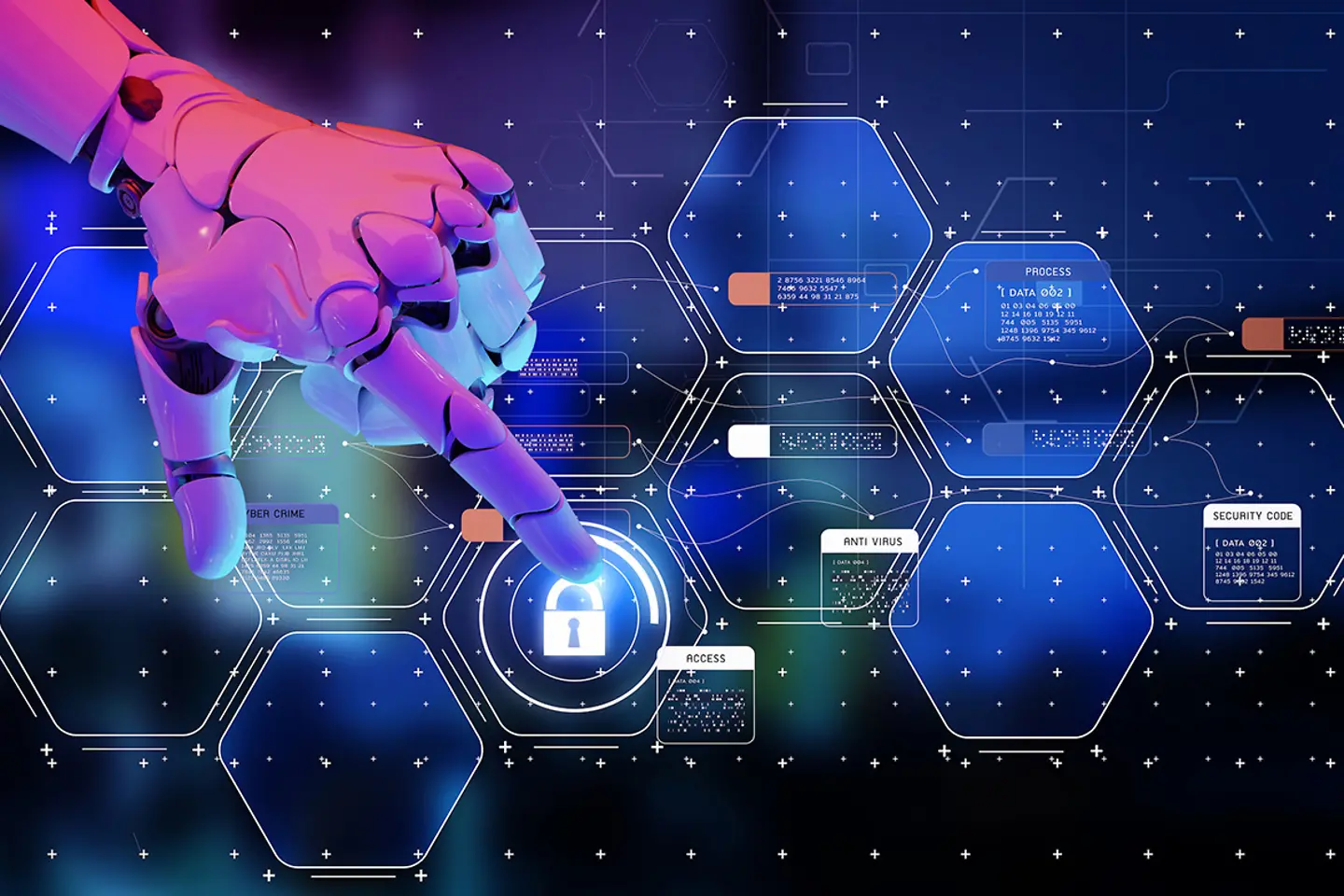
From organisational friction to cyber security concerns, these are some common roadblocks in the smart manufacturing journey – and how you can tackle them.
For a manufacturing industry rocked by supply chain shocks in recent years, Industry 4.0 technologies hold out a tantalising promise: the ability to unlock the power of resilience.
The COVID-19 crisis exposed the fragility of traditional manufacturing ecosystems, which are often too complex for visibility into vulnerabilities. Lacking diversification in supply base, contemporary production models proved unable to perform efficiently during a crisis.
The answer to these issues may now lie in smart manufacturing: the digitalisation of manufacturing at all levels to accomplish supply and demand requirements. Smart manufacturing can be implemented through a variety of solutions, including cloud-enabled monitoring of real-time data, mixed-reality applications and AI-powered predictive maintenance.
Yet concerningly, Asia-Pacific (APAC) manufacturers have been slower than their global peers to tap into Industry 4.0’s potential. IoT Analytics’s Industry 4.0 & Smart Manufacturing Adoption Report revealed that Asia lags behind North America and Europe in overall Industry 4.0 adoption.
According to the report, just 20% of Asian manufacturers have “extensively” rolled out transformative technologies linked to Industry 4.0. Asian manufacturers also show a lower-than-average adoption rate of cloud and IoT technologies.
Fortunately, this gap may be fast closing as more manufacturers take action to bolster their resilience. In IDC’s Future Enterprise Readiness Survey 2022, over 82% of APAC manufacturers said they have adopted or plan to adopt a ‘digital-first’ strategy to tackle market disruptions.
Preparing for your smart factory transformation? Get a headstart by overcoming these five common hurdles to Industry 4.0 adoption.

The problem: Industry 4.0 calls for a sea change in skill set – manufacturers must make the leap to digital innovations like data analytics and AI. Smart factories must pivot from a relatively low-skilled labour model toward workforces who can programme and troubleshoot these new technologies effectively.
It’s no surprise that the industry now faces a manufacturing skills gap. According to a Gartner survey, 57% of manufacturing leaders feel that their organisations lack the skilled workers needed to support smart manufacturing digitalisation. New workers have insufficient knowledge of industry best practices, while experienced workers often lack digital skills despite having the know-how.
This shortage is particularly acute in the Asia-Pacific. In Deloitte’s survey on AI adoption in manufacturing across APAC, 50% of 110 C-level executives from top Chinese manufacturing companies stated that the region had a lower quality of talent resources compared to North America and Europe.
The solution: Rather than searching for the right talent, manufacturers must develop their own. Closing the skills gap requires leaders to invest in on-the-job training programmes that are flexible and accessible.
To develop Industry 4.0 competencies efficiently, businesses can turn to digitalisation consultants for up-to-date insights on driving strategic change. For instance, T-Systems has partnered with Detecon to offer transformation & innovation advisory services that can help businesses nurture internal talent and build a culture of innovation.
Ultimately, adaptability to technological transformation is the key to thriving in the fast-changing landscape of Industry 4.0. Beyond building hard skills in your workforce, it’s vital to create a culture of continuous learning – one that motivates employees to stay agile and keep up with innovations.

The problem: Industry 4.0 adoption involves hefty investment, so manufacturers understandably demand commensurate results. The problem comes when such expectations are unrealistic or ill-defined, disappointing stakeholders and deterring further digitalisation.
In Molex’s State of Industry 4.0 Survey, 42% of manufacturing professionals cited “huge upfront investments making ROI difficult to understand” as a business model challenge for their customers when implementing Industry 4.0. Meanwhile, a Deloitte survey on AI adoption among Chinese manufacturers revealed a gulf between expectation and results: while 93% believed that AI would drive growth and innovation, only 9% ultimately felt their AI projects fulfilled at least 80% of their expectations.
To explain this gap, Deloitte’s survey highlighted root causes such as infrastructure limitations, wherein companies lack basic requirements such as sensors to collect data on key variables effectively. Another cause identified was the application of AI to excessively large-scale problems beyond the current capabilities of AI. This suggests that the seemingly low ROI of AI projects stems from a need to define problems more strategically and improve data collection methods.
The solution: For starters, manufacturers must find the right starting point for integrating new technologies. Companies first need to analyse their current business ecosystem and processes, before narrowing down a specific pain point and identifying the right solutions to tackle it. While developing their business case, companies should be sure to identify KPIs that they can accurately track and analyse. It’s also crucial to define a plan for automating this data collection.

The problem: Radical change often provokes resistance, and Industry 4.0 is no exception.
In Molex’s State of Industry 4.0 Survey, 44% of manufacturing professionals saw organisational or cultural barriers as their customers’ toughest challenge to overcome in Industry 4.0 adoption – twice as many as those who cited technology issues (22%). The top cultural challenge cited: their leadership staying too comfortable with traditional approaches and failing to promote change.
This organisational friction can also manifest as an IT/OT gap, where operational teams disagree with IT teams on how and where to implement novel technologies.
The solution: To get on board with digital transformation as a team, organisations must first realign around their big-picture goals – for instance, improved resilience in the long run – rather than getting caught up in the finer details of execution.
“Often, the core intentions of a digitalisation drive get masked by the cost reduction or organisational re-jigs resulting in resistance within,” explains Sampath Kumar Venkataswamy, research manager at IDC Manufacturing Insights Asia/Pacific.
For the digital revolution to succeed, decision-makers have a responsibility to get out of their comfort zones and invest in disruptive change. “The buy-in needs to happen from top-down,” Venkataswamy emphasises, “and the executive committee consisting of the CEO, COO, CFO, or CIO needs to be the key stakeholders.”

The problem: Amidst an alarming wave of cyber attacks on manufacturing, poor cyber security is increasingly threatening Industry 4.0 success. IBM’s X-Force Threat Intelligence Index 2022 reveals that manufacturing has become the world’s most attacked industry, with the number of vulnerabilities related to IoT-enabled industrial control systems rising sharply by 50% year on year. This highlights how manufacturers remain ill-equipped to patch software vulnerabilities and guard against malicious disruptions to Industry 4.0 operations.
Traditionally, manufacturers relied on air gapping to isolate and protect OT systems from the public-facing IT network. Smart factories, however, depend on the convergence of IT and OT silos for increased efficiency and smarter decision-making.
Understandably, this provokes tensions that impede IT/OT interconnectivity. IT security teams worry about being impacted by OT workings, which they perceive as opaque and under-regulated. Meanwhile, OT teams fear that IT security will shut down the manufacturing floor, resulting in financial impact and reputational damage.
The solution: Just as the shop floor and top floor can no longer be considered in isolation, neither can security for these two environments. Personnel from both camps must collaborate to define risk tolerance levels and agree on security measures in threat situations.
Overall, companies must adopt an integrated defence approach – one that accounts for both the data protection priorities of IT and the importance of minimising disruption to fragile OT systems. One example is T-Systems’ Magenta Industrial Security, which helps companies to develop a holistic security strategy with advice from both IT and OT security experts.
Magenta Industrial Security aims to provide end-to-end protection with an interdisciplinary security operations centre (SOC) that coordinates defence measures efficiently from converged IT/OT playbooks. By pinpointing vulnerabilities in existing technology and creating comprehensive defence concepts, a SOC can minimise manufacturers’ risk of unplanned downtime and subsequent revenue loss.

The problem: No manufacturer is an island – especially not in the connected factory of Industry 4.0. Where traditional factories functioned in silos, today’s IoT-enabled factories demand connectivity across smart production systems, not to mention the integration of entire value chains – from warehousing to logistics, marketing, and sales.
This immense amount of data and complexity isn’t something manufacturers can handle alone, and those who cling to a silo mentality typically lag behind their competitors.
Case in point: a Cisco study found that IoT initiatives proved much more challenging than expected for 60% of IT and business decision-makers – and that the most successful organisations used ecosystem partners to help shorten their learning curve. Deloitte’s survey of Fortune 500 manufacturers attests to the power of collaboration: companies with over 15 strategic alliances achieved double the revenue growth of companies with fewer alliances.
The solution: To fully realise the potential of smart factories, it’s time to adopt an ecosystem mindset.
Companies should identify their capability gaps across the value chain, and select suitable ecosystem partners to increase their competitive edge. This may include cloud providers, AI experts, analytics vendors, system integrators, and more.
To avoid a piecemeal outcome, opt to work with digitalisation consultants. T-Systems sets the stage for smart factory capabilities by helping companies to connect and optimise their manufacturing processes and logistics.
Post-pandemic, Asia-Pacific manufacturers have a golden opportunity to rise up the manufacturing value chain. As businesses seek to bolster their supply chain resilience, many are looking into diversifying their manufacturing sources outside China – and turning to Southeast Asia as a cost-competitive manufacturing hub with market access to both Asia and the West.
As a result, Boston Consulting Group (BCG) predicts that ASEAN’s manufacturing output could swell by up to an additional USD600 billion a year by 2030. More than half of that growth would come from increased global exports. Companies who move up the smart manufacturing ladder will be best placed to capitalise on these trends; McKinsey estimates that Industry 4.0 adoption could reap productivity gains worth up to USD627 billion for ASEAN alone.
Manufacturers often confront stumbling blocks in their road to digital transformation, but experts like T-Systems can lend a hand. Discover how we can help you design an effective Industry 4.0 roadmap and identify critical domains of action to accelerate progress in your digital strategy. As a partner in providing end-to-end security for your IT and OT systems, we can help you achieve manufacturing resilience and secure fail-safe, reliable production for your factory of the future. Speak to us today.